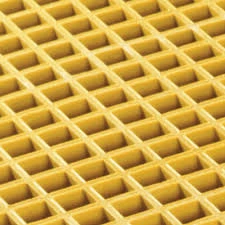loading...
- No. 9, Xingyuan South Street, Dongwaihuan Road, Zaoqiang County, Hengshui, Hebei, China
- admin@zjcomposites.com
- +86 15097380338
- Welcome to visit our website!
Innovative Applications and Benefits of FRP Structural Members in Modern Engineering Design
Structural Members in FRP Innovations and Applications
Fiber Reinforced Polymer (FRP) has emerged as a revolutionary material in the construction industry, particularly when it comes to the design of structural members. FRP composites are known for their impressive strength-to-weight ratios, corrosion resistance, and versatility, making them an ideal choice for a range of applications. This article discusses the key characteristics, advantages, and applications of FRP structural members, showcasing why they are becoming an integral part of modern engineering design.
Understanding FRP
FRP consists of a polymer matrix reinforced with fibers, which can be made from glass, carbon, aramid, or other materials. The combination of these two components results in a composite material that exhibits superior mechanical properties compared to traditional materials like steel and concrete. FRP is lightweight, which not only facilitates easier handling and installation but also reduces the dead load on structures, allowing for innovative design possibilities.
Advantages of FRP Structural Members
1. Corrosion Resistance One of the primary advantages of FRP is its resistance to corrosion, making it particularly suitable for environments prone to chemical attacks, such as coastal regions or industrial settings. Unlike steel, which can rust and degrade over time, FRP maintains its integrity and appearance over extended periods, reducing maintenance costs.
2. Lightweight FRP structural members are significantly lighter than traditional materials. This characteristic simplifies transport and installation, as less manpower and equipment are required. The reduced weight also translates to lower foundation requirements, making it an economical choice in various construction projects.
3. Strength-to-Weight Ratio FRP offers exceptional tensile strength, which allows for the design of slender and aesthetically pleasing structures without compromising safety. This is particularly relevant in applications where space is limited or visual impact is a concern.
4. Thermal and Electrical Insulation Another beneficial aspect of FRP is its poor thermal and electrical conductivity. This makes FRP structural members ideal for applications in electrical and HVAC systems, where insulation is critical.
5. Design Flexibility The manufacturing process of FRP allows for greater flexibility in terms of shapes and sizes. Designers can create complex geometries that would be challenging or impossible with traditional materials. This adaptability enables the creation of innovative structures that meet specific aesthetic and functional requirements.
frp structural members

Applications of FRP Structural Members
FRP structural members are finding applications across various sectors, including
- Bridges FRP has been used in bridge construction, where its lightweight nature and corrosion resistance contribute to longer service life and lower maintenance needs.
- Buildings In the construction of buildings, FRP supports, beams, and panels are used to create aesthetically pleasing designs while maintaining structural integrity.
- Marine Structures Given its corrosion resistance, FRP is widely employed in the construction of docks, pilings, and other marine applications, where exposure to saltwater can severely affect traditional materials.
- Wind Energy The wind energy sector utilizes FRP for turbine blade construction, leveraging its lightweight and high-strength properties to optimize performance and efficiency.
- Infrastructure Rehabilitation FRP offers effective solutions for reinforcing existing structures, providing additional strength without significantly increasing weight or demand on the original foundation.
Conclusion
The evolution of FRP technology marks a significant step forward in engineering and construction practices. With its array of benefits—including corrosion resistance, lightweight characteristics, and design versatility—FRP structural members are well-positioned to meet the demands of contemporary and future construction projects. As research progresses and manufacturing techniques improve, the use of FRP is expected to expand further, paving the way for innovative solutions that prioritize both performance and sustainability.
-
GRP Structures: The Future of Lightweight, High-Performance EngineeringNewsJun.20,2025
-
FRP Water Tank: High-Performance Storage for Corrosive and Clean Water SystemsNewsJun.20,2025
-
FRP Square Tube: The New Industry Standard for Chemical and Structural ApplicationsNewsJun.20,2025
-
FRP Pultruded Profiles: The Ultimate Choice for Lightweight Structural StrengthNewsJun.20,2025
-
FRP Handrails: The Safer, Smarter, and Stronger Choice for Modern InfrastructureNewsJun.20,2025
-
FRP Grating: The Smart Solution for Durable, Lightweight Industrial FlooringNewsJun.20,2025
-
Why Choose a Galvanized Water Tank for Your Storage NeedsNewsMay.21,2025
